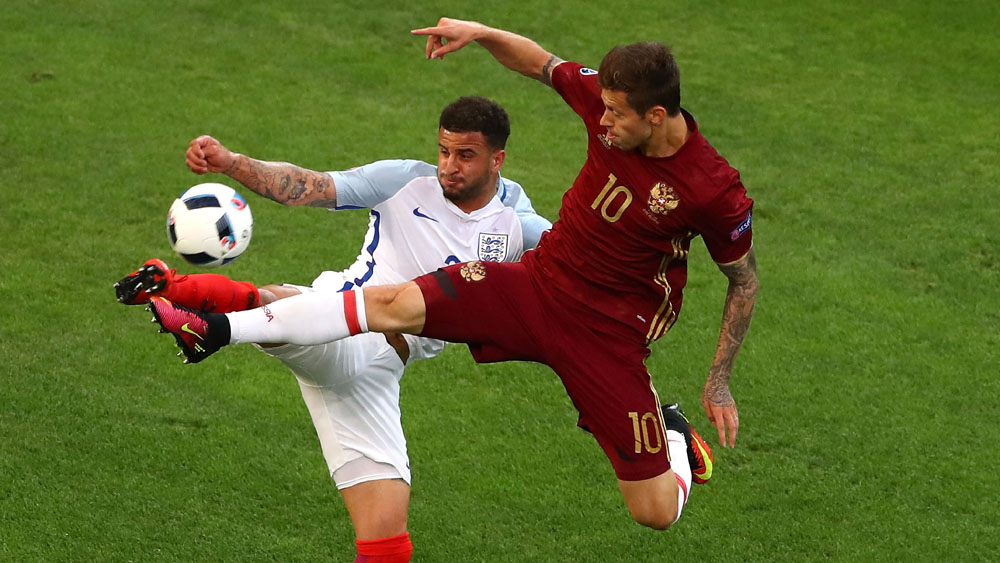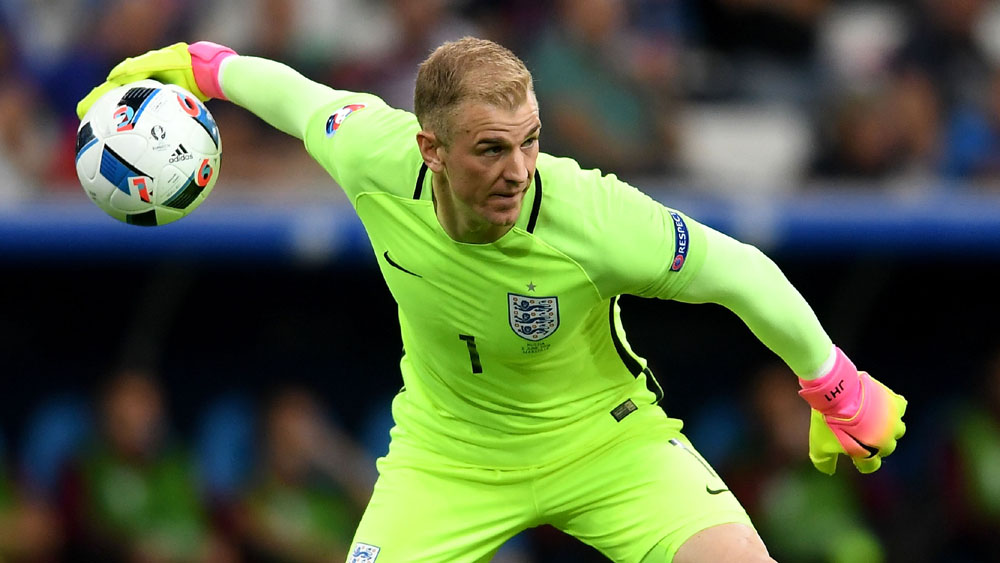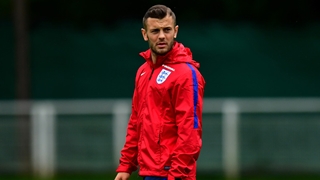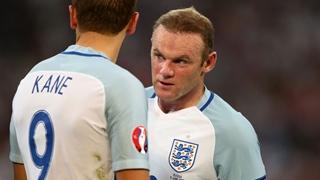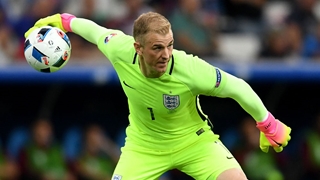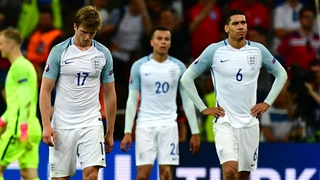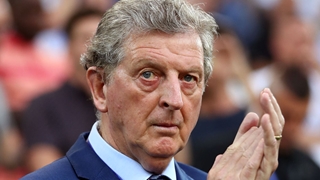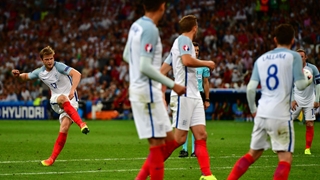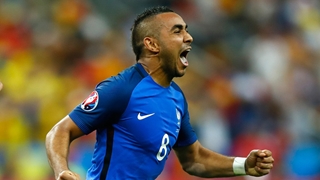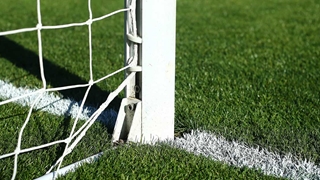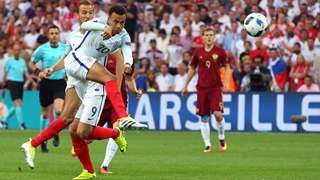
Although England were left frustrated by Vasili Berezutski’s injury-time equaliser in their 1-1 draw against Russia, there were many positives for Roy Hodgson’s men in their opening game at Euro 2016.
FA Education Content Editor, Peter Glynn, looks at why England should be encouraged by their performance in Marseille on Saturday night.
England 1-1 Russia
UEFA Euro 2016
Group B
Saturday 11 June 2016
Stade Velodrome, Marseille
Live on ITV
England’s flexible and fluid forward line
England’s Euro 2016 debut saw Roy Hodgson deploy a flexible and fluid attacking strategy based on interchange of position and forward running threat between and beyond Russia’s backline.
With Harry Kane the only fixed point along in England’s attack, Adam Lallana, Dele Alli and Raheem Sterling were all given licence to change position and seek pockets of space in central areas– sharing some similarities with the attacking approach adopted by France in their 2-1 victory over Romania.
As the Spurs’ striker routinely dropped off to provide England’s midfield and full-backs with a passing outlet to feet, Kane’s fellow attackers were encouraged to time intelligent runs beyond and behind the opposition to receive threaded passes from deeper positions.
It was an approach that repeatedly unlocked Russia’s defensive arrangement – particularly in the first period - where England produced numerous goalscoring opportunities.
Lallana’s evolving positioning
The most challenging aspect for those analysing team playing styles during Euro 2016 may be finding ways in which to accurately describe the evolving positional roles on display.
England’s Adam Lallana was a case in point – at different times during the game, the Liverpool attacker operated between the right and centre of England’s attack as well as the furthest forward player on occasion.
In the opening period of the game, the 28-year-old took up a narrow position on the right of England’s attack, occupying both Russia’s left-sided central defender and left-back, in turn creating space for full-back Kyle Walker to overlap on the right flank.
As the game progressed, Lallana could be seen drifting inside to share the number ten position with Alli, as the pair searched for operating space along and around England’s frontline.
Lallana’s well timed runs from both wide and central areas – particularly in the first period – regularly saw the former Southampton man ahead of Kane in England’s attack.
Rooney switching the point of attack
The England captain swatted aside any question of his effectiveness operating from a more withdrawn midfield position, registering an impressive performance as a deep-lying playmaker.
In particular, it was Rooney’s collection of long diagonal switches of play which stood out.
With England’s wide attackers, Lallana and Sterling, moving inside into central attacking spaces ahead of Rooney, the Manchester United man had the opportunity to hit accurate cross-field passes for the forward surges of full-backs Danny Rose and Walker who took every opportunity to gallop forward.
Rooney’s varied range of passing succeeded in stretching the Russian’s from side-to side, creating space inside and between defenders for England to try and slide forward passes for the forward runs of Alli and Lallana.
Playing out from the back with variety
England demonstrated a variety of approaches when playing-out from the back on Saturday evening.
Goalkeeper Joe Hart regularly rolled the ball short to midfielder Eric Dier, who at times dropped into England’s backline to help build the play through the thirds of the field.
Similarly, the Manchester City stopper was comfortable in throwing and clipping accurate balls over Russia’s frontline of attackers into wider areas for Rose and Walker to begin attacking moves from wide areas.
Pressing from a mid-block
When Russia were in controlled possession of the ball in their own territory, England dropped to form a mid-block around the half-way line.
With all eleven England players behind the ball, Russia’s defenders were forced to try and locate longer passes to their forward players from deep positions.
If Russia did break into midfield and beyond England’s agreed pressing line pressure was applied to the man in possession.
This combination of patience and positioning when out of possession, regularly forced Russia’s back players to rush in possession.
On the occasions when England did have the opportunity to press higher up the pitch -a situation often triggered by the work rate of Lallana and Sterling in closing down opposition full-backs - Hodgson’s men pressed effectively and aggressively as a team.
Recommended Reading:
Euro 2016 tactical analysis: France 2-1 Romania
Peter Glynn is FA Education Content Editor and will be providing comment and analysis throughout Euro 2016. mPeter is the editor of The FA’s coaching magazine, The Boot Room, and holds the FA Advanced Youth Award and UEFA B coaching licence. Follow Peter on twitter: @_peterglynn
*The views expressed in this article are those of the author and not necessarily The Football Association

